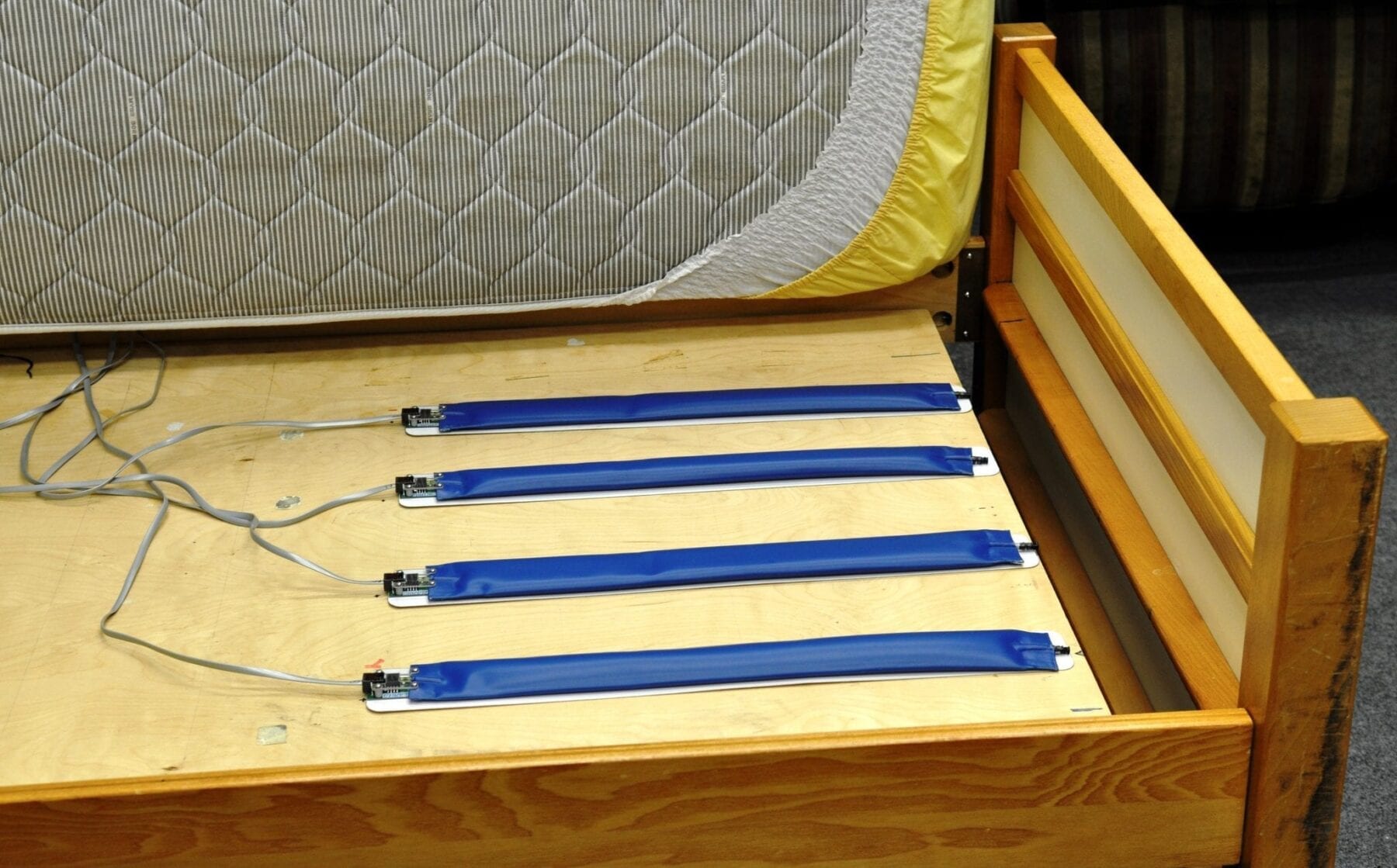
Developing and evaluating motion-capture technology to help older adults “age in place” has been the focus of researchers at the University of Missouri for more than a decade. Previous research has utilized video game technology and various web-cameras to detect health changes in Tiger Place residents. Now, two new studies demonstrate how monitoring walking speed using radar and heart health by utilizing bed sensors help maintain older adults’ health and warn of impeding issues.
“In-home sensors have the ability to capture early signs of health changes before older adults recognize problems themselves,” said Marjorie Skubic, professor of electrical and computer engineering in the MU College of Engineering and director of MU’s Center for Eldercare and Rehabilitation Technology. “The radar enhances our ability to monitor walking speed and determine if a senior has a fall risk; the bed sensors provide data on heart rate, respiration rate, and overall cardiac activity when a senior is sleeping. Both sensors are non-invasive and don’t require seniors to wear monitoring devices.”
The radar sensors were used to monitor the walking speed of residents in 10 Tiger Place apartments for two years. The radar devices were concealed in a wooden box and placed in the living room of each senior resident. Residents also were provided monthly assessments by professionals to establish whether they were at risk for potential falls. The data collected were then compared to the data captured by the radar.
“Before using radar, we were able to estimate an individual’s walking speed and have an idea of their health status,” said Dominic Ho, co-author and professor of electrical and computer engineering in the MU College of Engineering. “Now, we have data that definitely shows how declines in walking speed can determine the risk for falls.”
Skubic and her team also developed a bed sensor with the ability to continuously monitor heart rate, respiration rate and overall cardiac activity. The bed sensors are made using a hydraulic transducer, which is a flexible tube of water. The transducer measures the ballistocardiogram, which is the mechanical effect of the blood flowing through the body as a result of the heart beating. In the study, four hydraulic transducers were placed under a mattress to capture cardiac data of the participants.
“Heart disease is a major cause of death for both men and women,” Skubic said. “Having a sensor continuously monitoring heart rate provides a significant benefit for older adults. The bed sensors also allow us to collect data on sleeping patterns– when people are in bed, how often they are in bed, and how long they are in bed. Similar to walking speed, sleep patterns can detect early signs of illness.”
The radar study and the bed sensor study provide non-invasive monitoring systems that help detect early signs of illness. Skubic and her team are working to investigate other sensors that can further improve very early detection of health changes so that health problems can be addressed while they are still small and manageable.
Learn more: Radar, Bed Sensors Help Health Providers Detect Problems Early
The Latest on: In-home sensors
[google_news title=”” keyword=”In-home sensors” num_posts=”10″ blurb_length=”0″ show_thumb=”left”]
via Google News
The Latest on: In-home sensors
- Medical Sensors Market worth $3.6 billion by 2029 - Exclusive Report by MarketsandMarkets™on May 1, 2024 at 7:13 am
The medical sensors market is valued at USD 2.4 billion in 2024 and is projected to reach USD 3.6 billion by 2029; it is expected to grow at a CAGR of 8.1% from 2024 to 2029 according to a new report ...
- Dozens displaced in massive, 3-alarm Allentown blazeon May 1, 2024 at 6:44 am
Flames ignited sometime around 3 p.m. Tuesday at a rowhome and spread to others in the 700 block of North Seventh Street.
- Sound the Alarm event aims to install 300 smoke alarms in northwest Reading homeson May 1, 2024 at 5:15 am
Volunteers and members of the Red Cross teamed with community partners to install at least 300 smoke alarms in approximately 100 city homes.
- Bay Alarm Medical Alert System Cost and Fall Detection Pricingon April 30, 2024 at 10:44 pm
When it comes to medical alert systems, the primary goal is peace of mind. That’s why you want to select a provider with years of experience and a great reputation. Bay Alarm Medical certainly fits ...
- 'Smart' toilet seat monitors health data to proactively help patients in medical distresson April 30, 2024 at 8:30 pm
A smart toilet, similar to your smart watch, is capable of collecting vital data from your daily use of the toilet seat. This includes heart rate, blood pressure and temperature. The seat is being ...
- Crews battle multi-alarm fire in Allentown, Pa.on April 30, 2024 at 2:32 pm
ALLENTOWN, Pennsylvania (WPVI) -- Firefighters are battling heavy flames and thick smoke coming from a home in Allentown. Officials say first responders were called to the 700 block of 7th Street ...
- 3-alarm fire rips through Center City Allentown row homes, displacing 20 residents [Updated]on April 30, 2024 at 1:15 pm
A short time later, the department posted that a third alarm had been requested for the blaze. Flames could be seen shooting through the roof of one of the homes. Photos shared to social media showed ...
- 50 firefighters battle multi-alarm blaze at East Wareham, Massachusetts, homeon April 29, 2024 at 8:18 pm
Video from the scene showed flames shooting through the roof of the home, with more fire damage to the rear half of the home.
- 3-alarm fire engulfs Onset homeon April 29, 2024 at 7:36 pm
Crews extinguished a three-alarm fire that engulfed a single-family home in Onset Monday afternoon, officials said.At around 2:31 p.m., firefighters responded
- Brilliant Smart Home Control Plug-In Panel Review: A Sleek Smart Controller at a Steep Priceon April 28, 2024 at 6:00 am
Brilliant's smart-home-agnostic control panel has made it easier to manage connected devices with its new plug-in model. Here's what I thought of the pricey new smart home hub.
via Bing News











